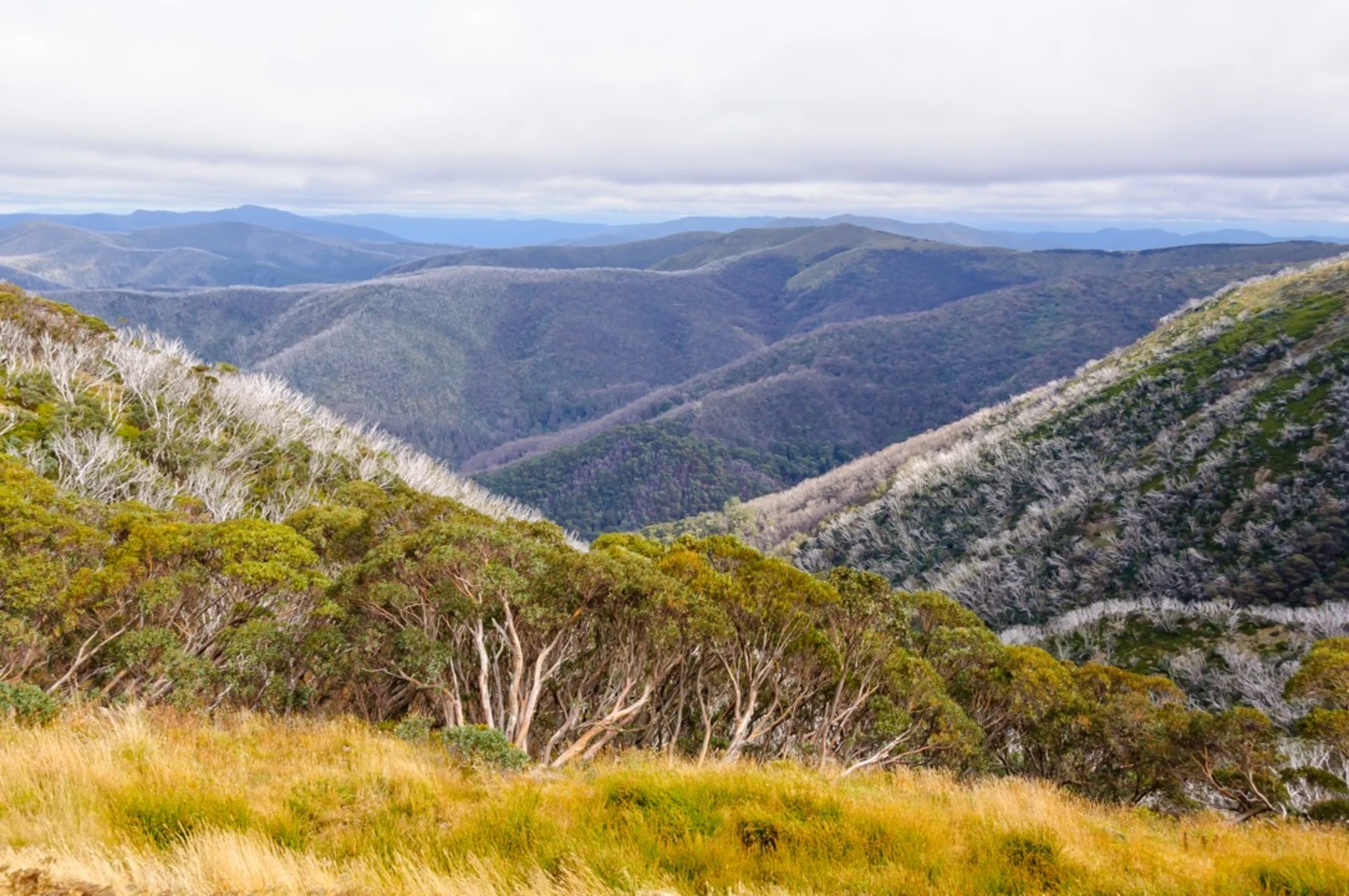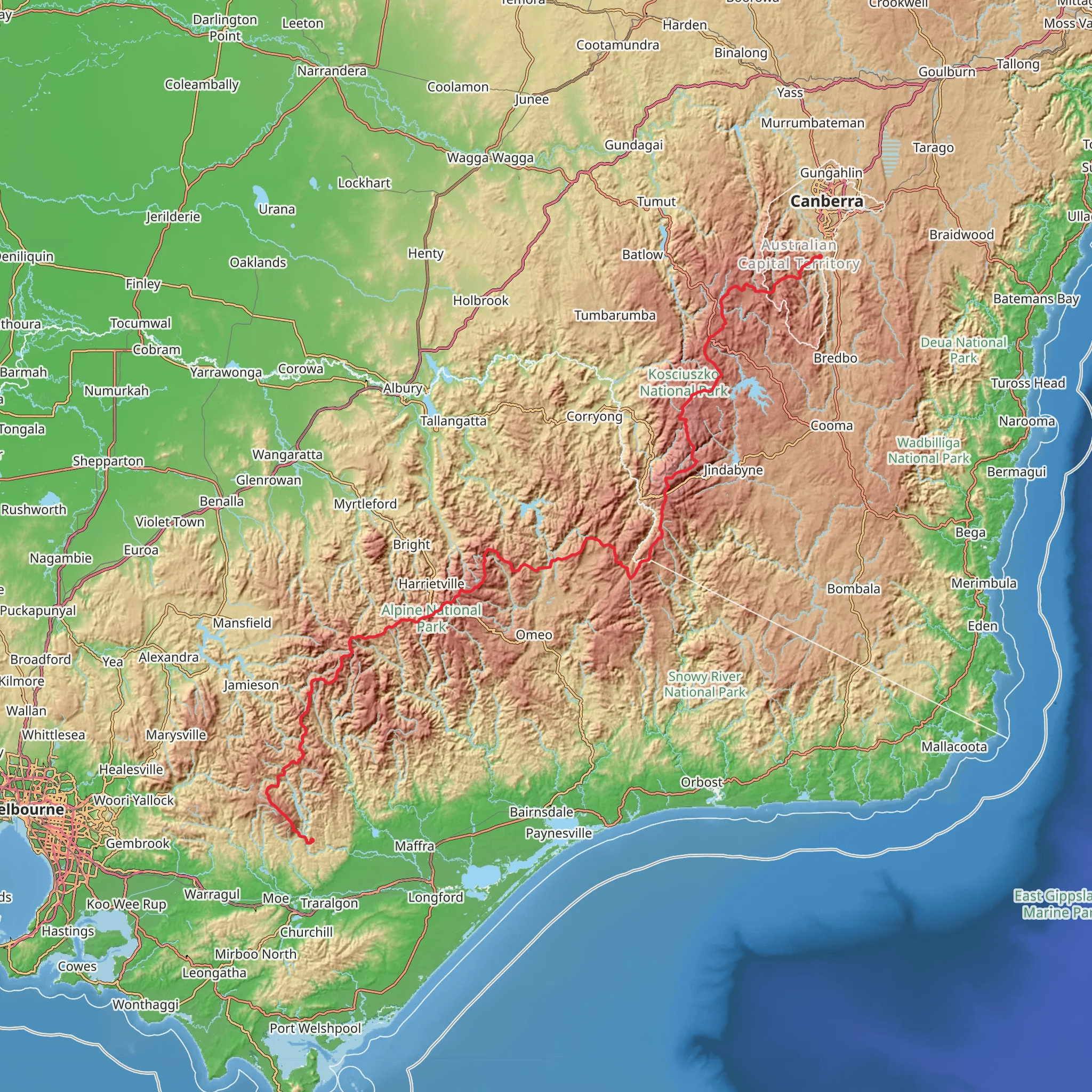Download
Preview
Add to list
More
691.0 km
~42 days
18834 m
Multi-Day
“Embark on the Australian Alps Walking Track, a scenic odyssey of rugged peaks, diverse fauna, and historic trails.”
Spanning approximately 691 kilometers (429 miles) and with an elevation gain of around 18,800 meters (61,680 feet), the Australian Alps Walking Track is a challenging yet rewarding journey through some of Australia's most stunning alpine landscapes. The trail begins near Mount Baw Baw in Victoria and traverses through the high country of Victoria, New South Wales, and the Australian Capital Territory, culminating at Walhalla, Victoria.
Getting to the Trailhead
To start your adventure on the Australian Alps Walking Track, you can reach the trailhead near Baw Baw by car or public transport. If driving, take the Mount Baw Baw Tourist Road from Noojee, which is accessible from Melbourne via the M1 and C426 highways. For those preferring public transport, options include taking a train from Melbourne to Warragul, followed by a bus to Noojee. From Noojee, you may need to arrange a taxi or shuttle service to the trailhead.
Navigating the Trail
The trail is marked with distinct signage, but due to its length and complexity, it's advisable to carry a reliable navigation tool. HiiKER is an excellent resource for downloading maps and ensuring you stay on the correct path throughout your journey.
Landmarks and Natural Beauty
As you embark on the Australian Alps Walking Track, you'll encounter a variety of landscapes, including snow gum forests, alpine meadows, and rugged mountain ranges. The trail offers panoramic views of the Victorian Alps and crosses several notable peaks, such as Mount Feathertop and Mount Bogong, Victoria's highest peak at 1,986 meters (6,516 feet).
Wildlife and Flora
The region is rich in biodiversity, and hikers may spot wildlife such as kangaroos, wallabies, wombats, and a plethora of bird species. The flora is equally diverse, with wildflowers blooming in spring and summer, creating a colorful tapestry against the green backdrop of the alpine vegetation.
Historical Significance
The Australian Alps have a rich cultural history, with indigenous peoples having lived in the area for thousands of years. European explorers and settlers later discovered the region, and remnants of the gold mining era are still visible along the trail. The track also passes through several historic huts, offering a glimpse into the lives of early cattlemen and pioneers.
Preparation and Planning
Given the trail's length and varying weather conditions, hikers should be well-prepared with appropriate gear, including warm clothing, rain protection, and sturdy hiking boots. It's also essential to carry enough food and water, as resupply points are limited. Plan your hike carefully, considering the time of year and weather patterns, and be prepared for snow and ice if trekking outside of the summer months.
Safety and Regulations
Always check for current trail conditions and park regulations before setting out. Be aware of the potential for bushfires in the summer and early autumn, and familiarize yourself with the Leave No Trace principles to minimize your impact on the environment.
By taking the necessary precautions and respecting the natural beauty of the Australian Alps, hikers can enjoy a memorable experience on one of Australia's most iconic long-distance trails.
Activity types
Comments and Reviews
User comments, reviews and discussions about the Australian Alps Walking Track, Victoria.
4.83
average rating out of 5
6 rating(s)

